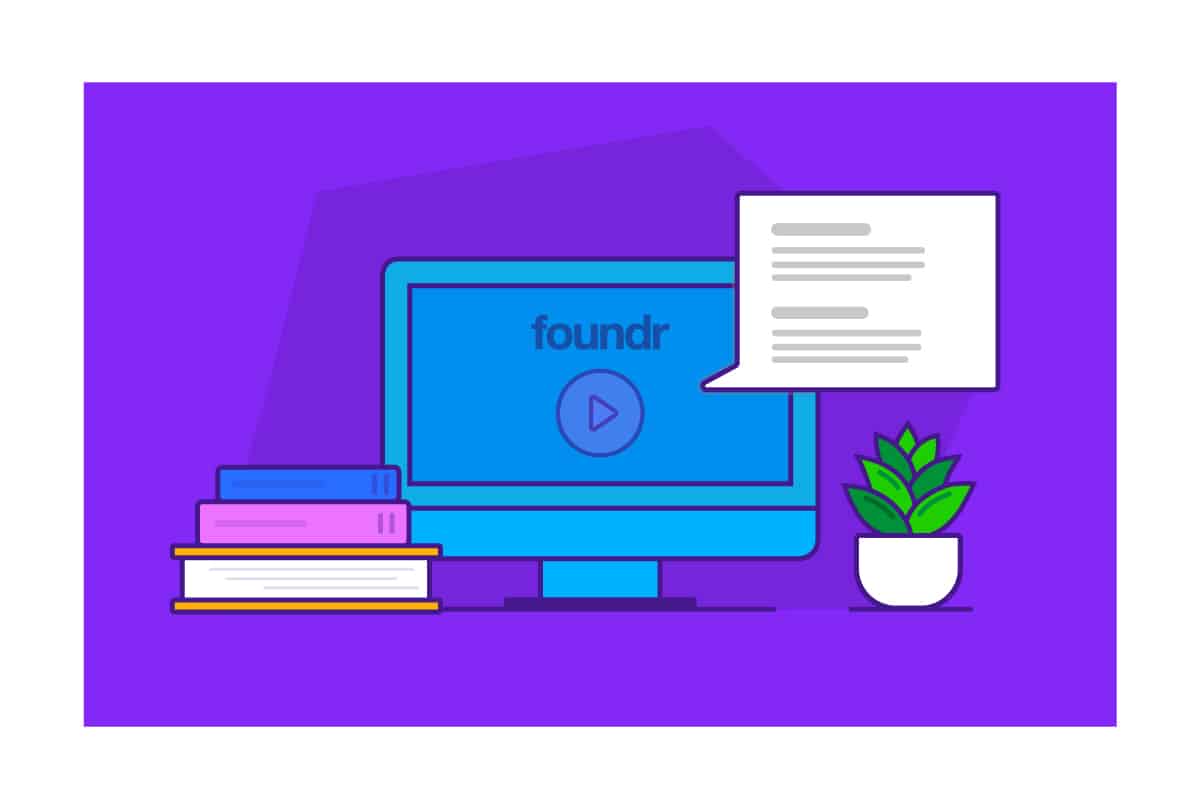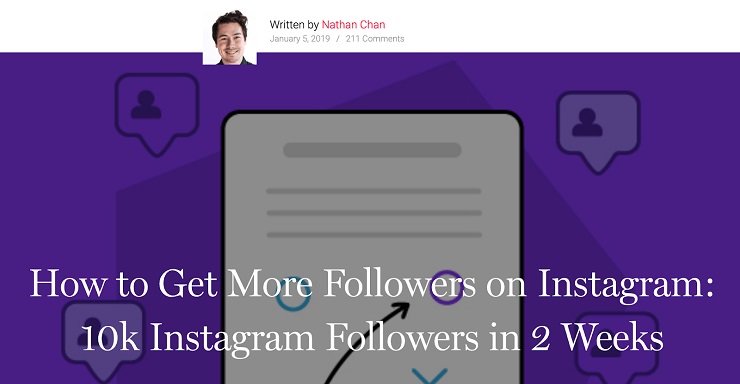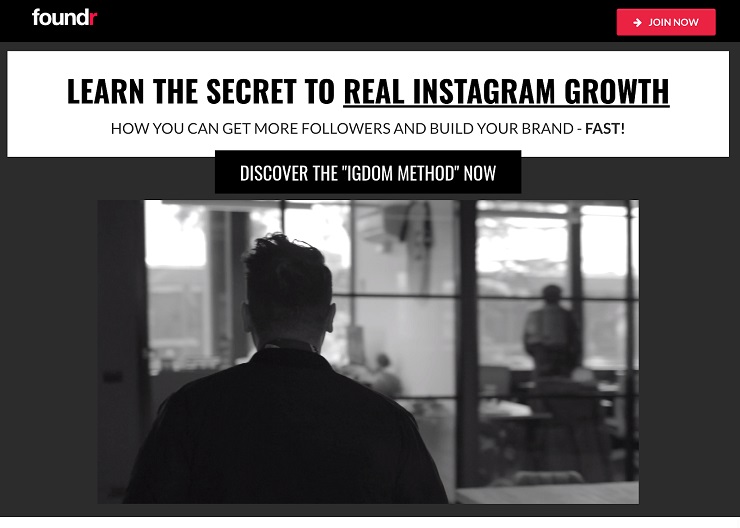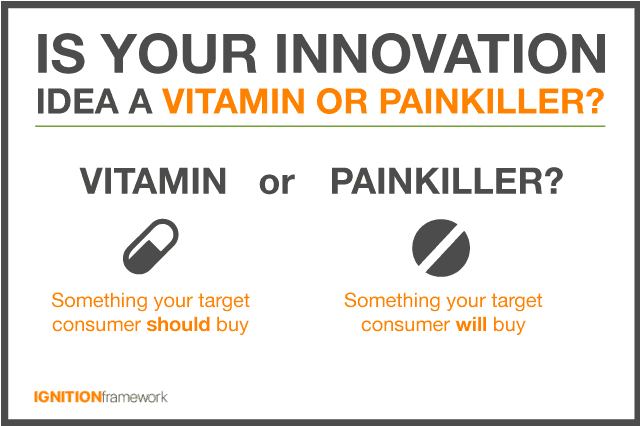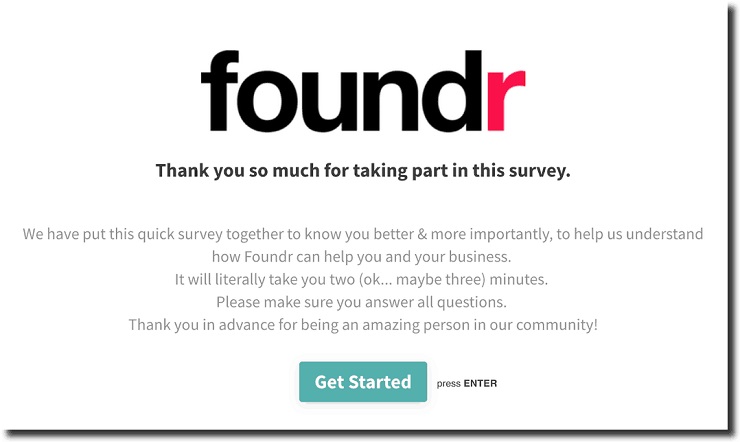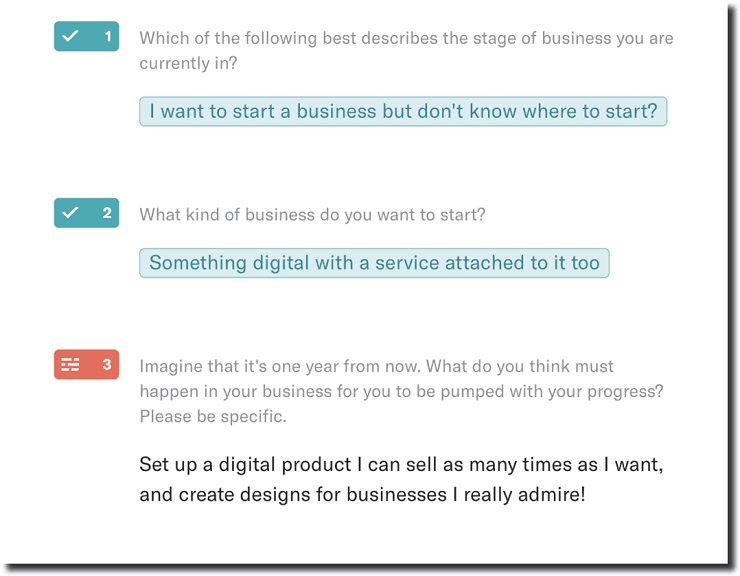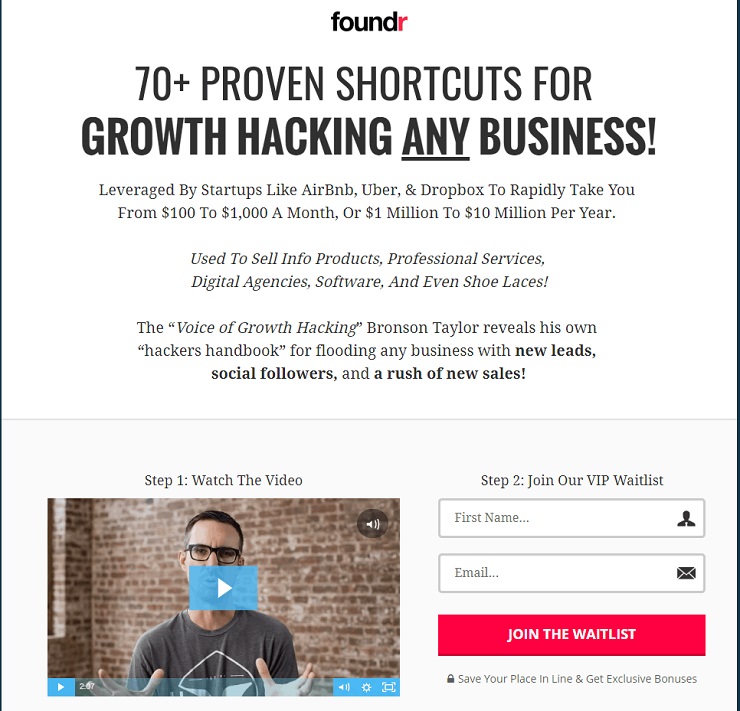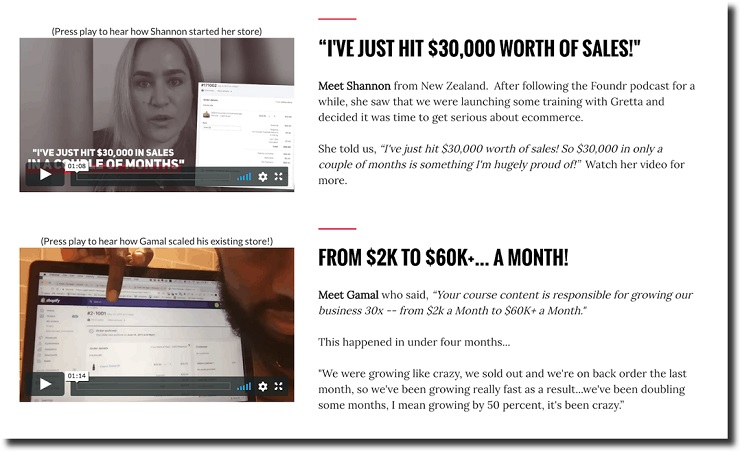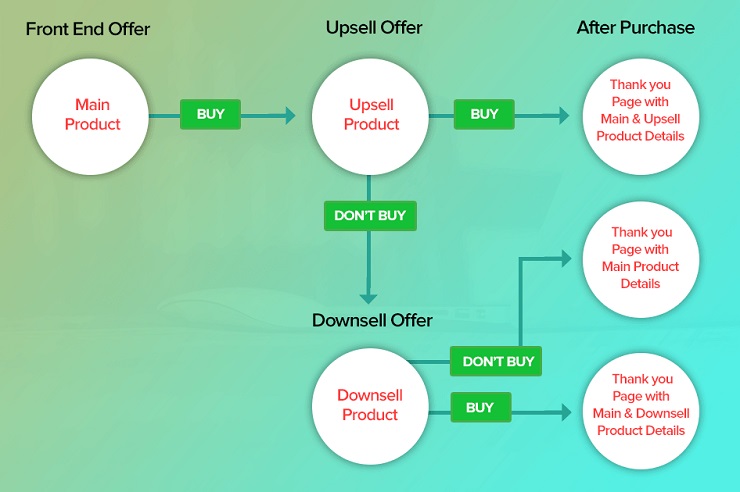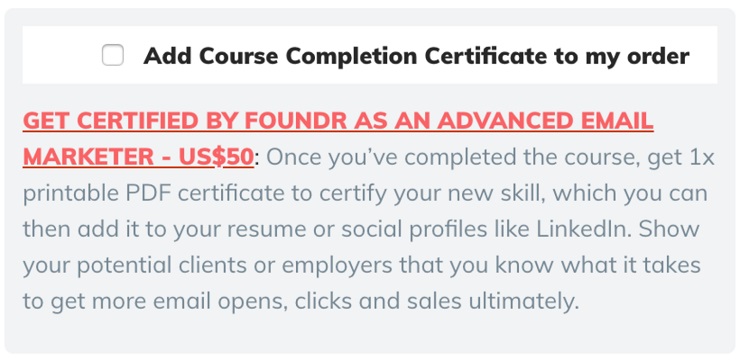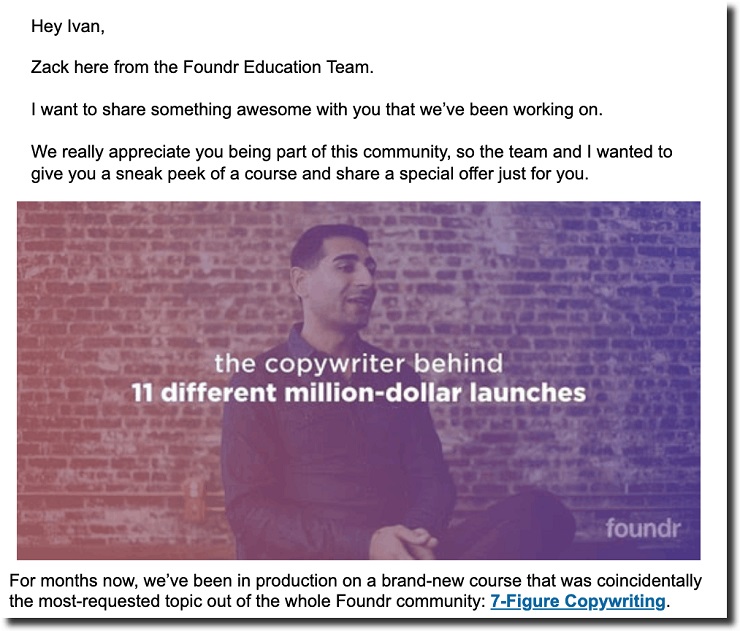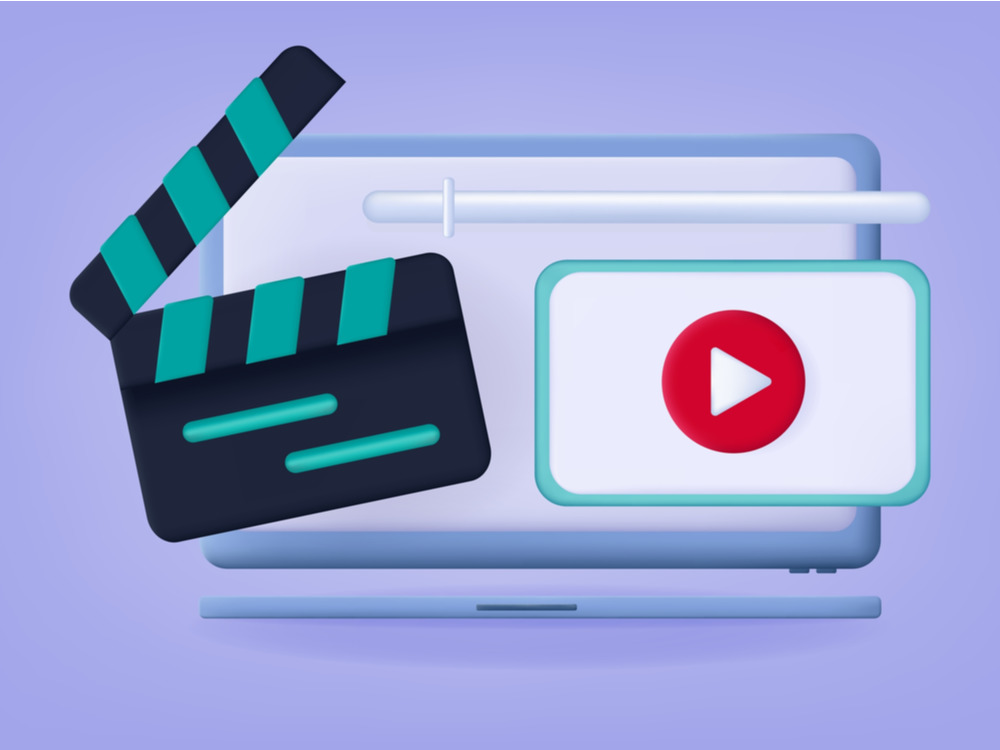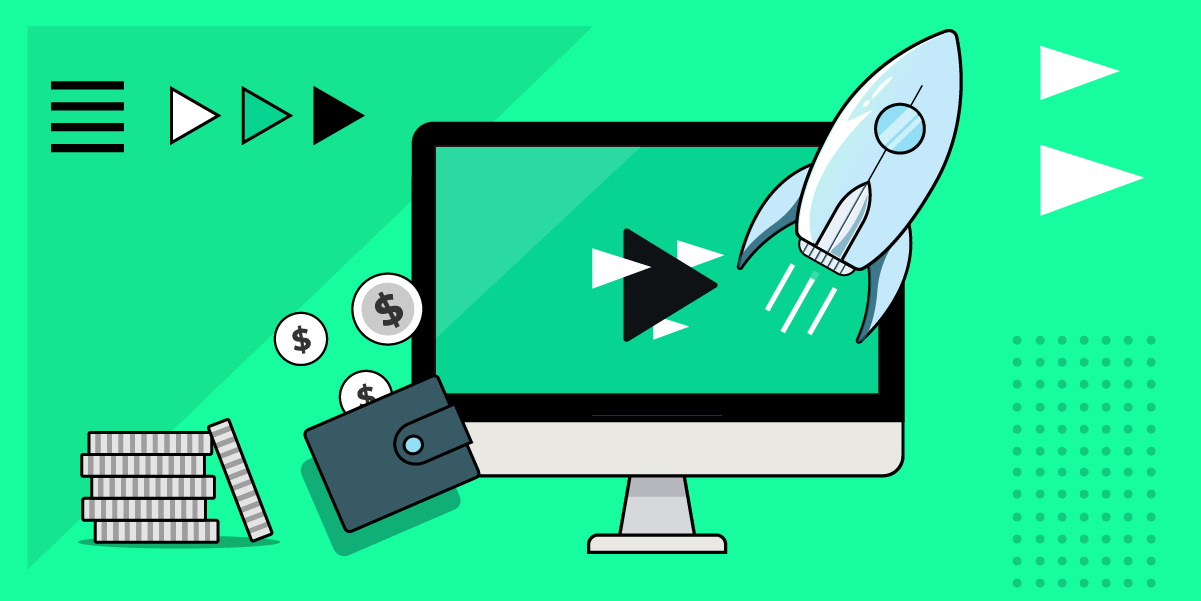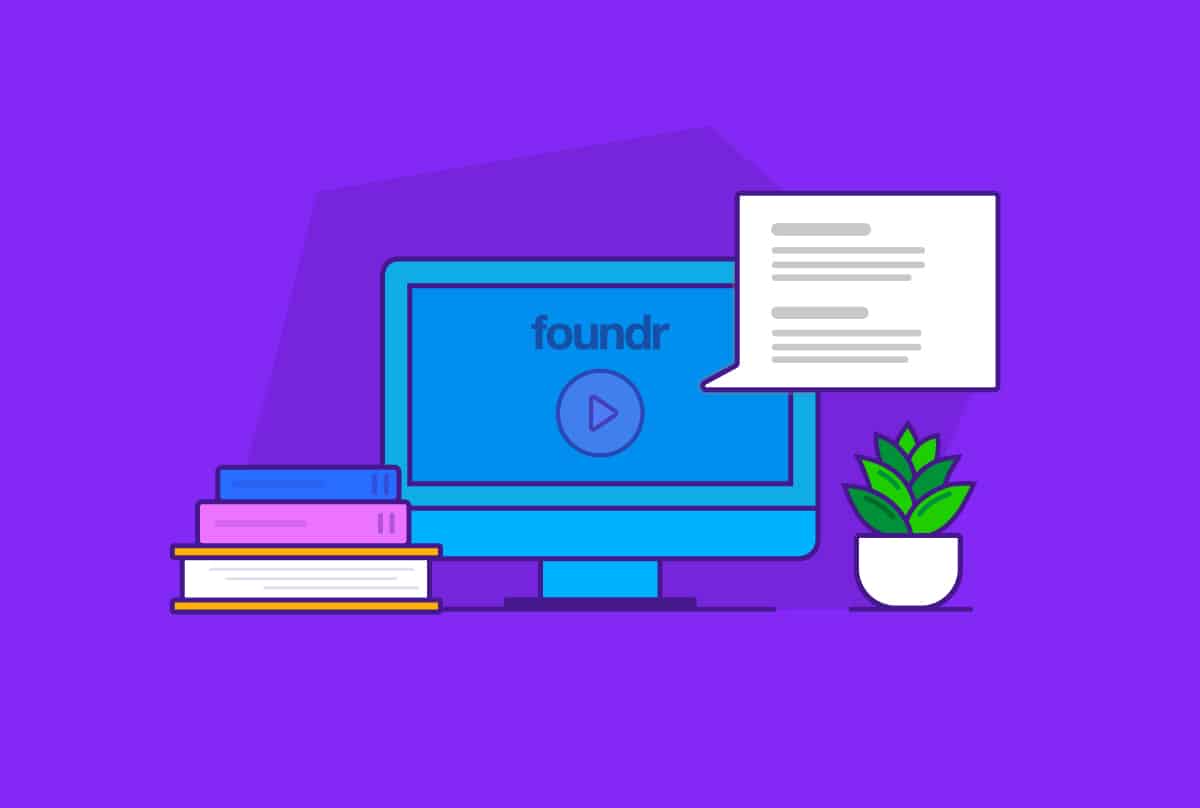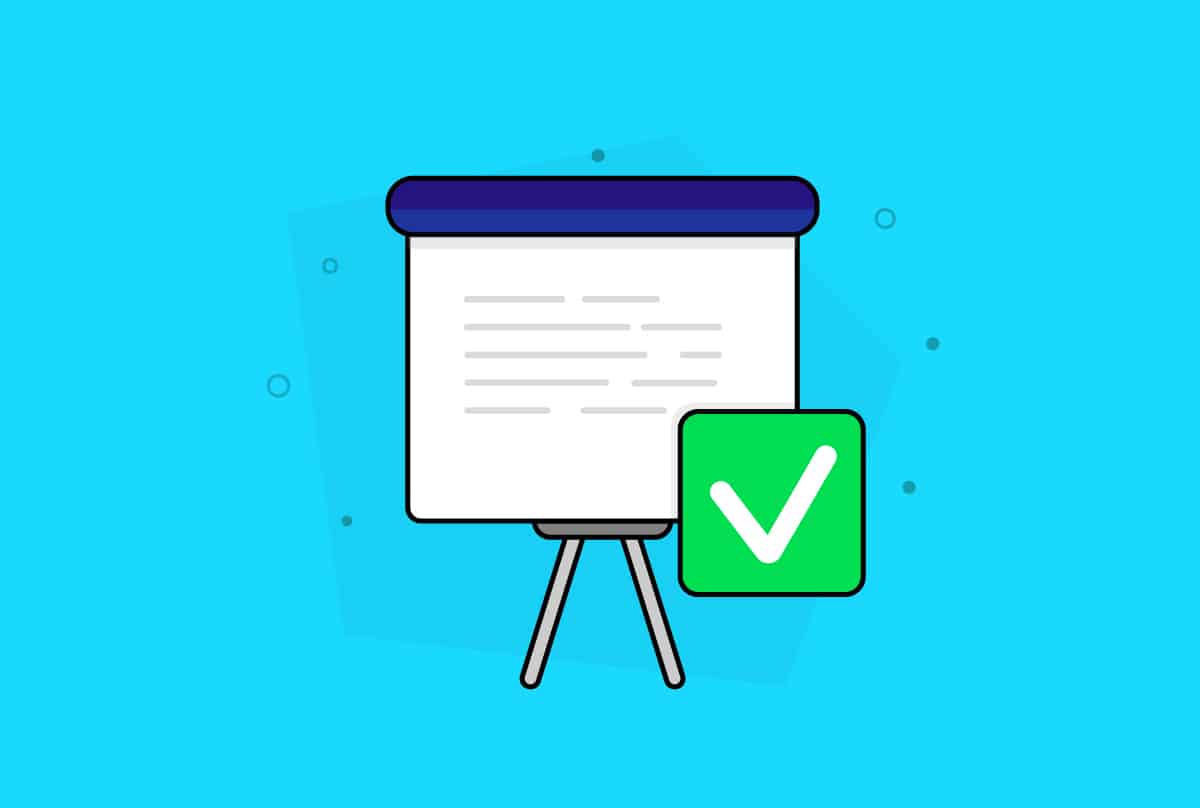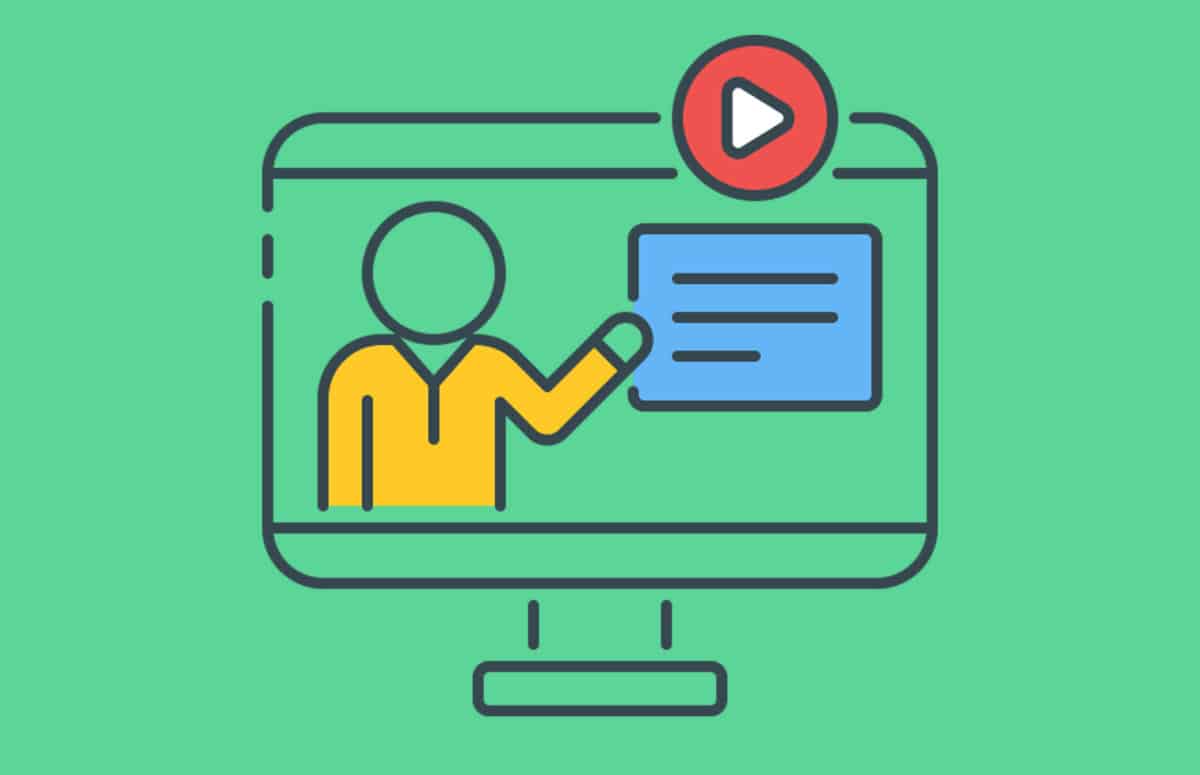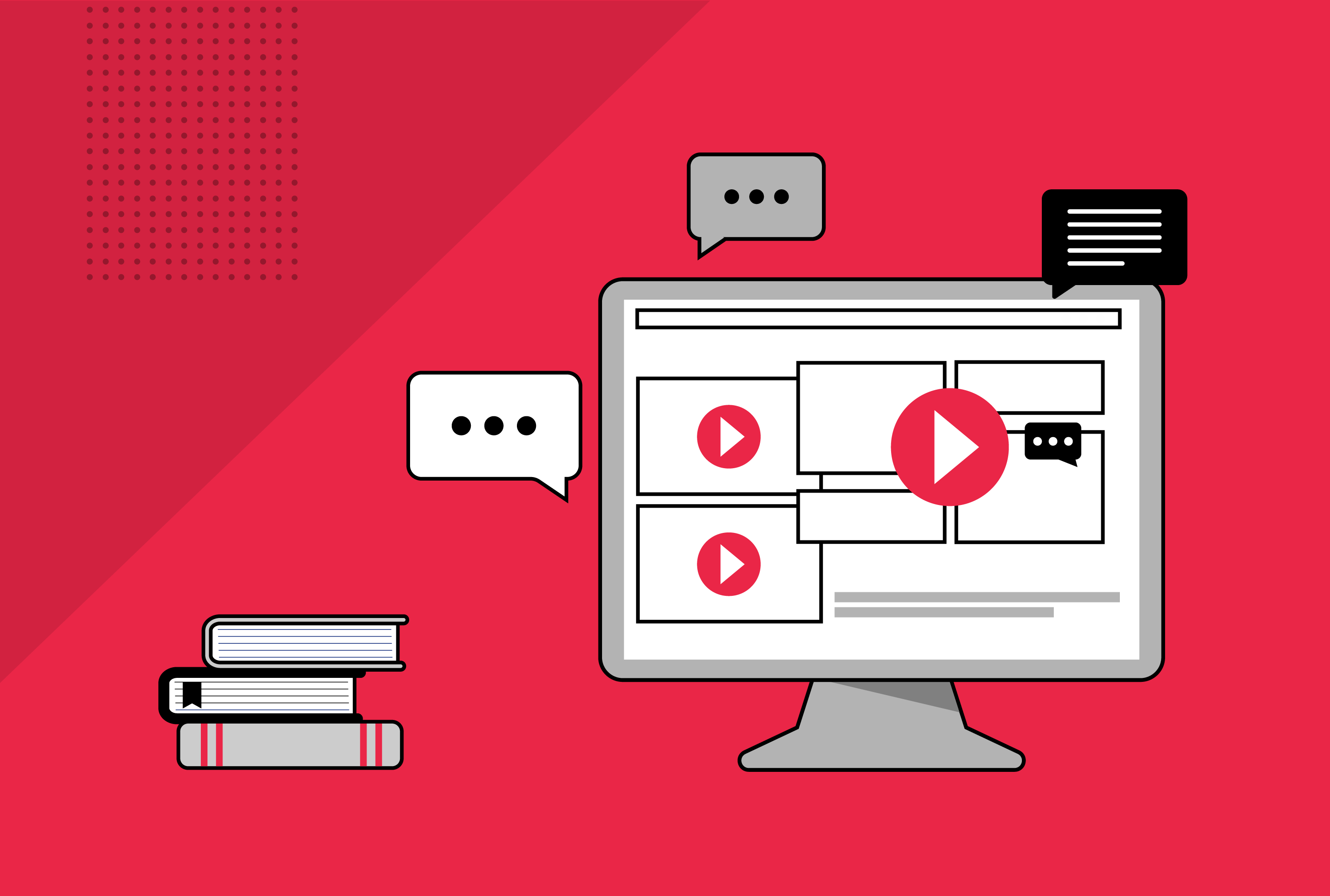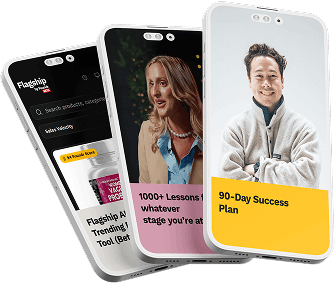So you’ve created an online course. And it’s really good. You’re finally ready to push the big red launch button and watch the signups roll in. Right?
You might not want to push that button just yet.
Launch an online product without doing the right level of planning and promotion, and you’ll be launching to the sound of crickets.
You’ve likely heard such dreadful stories of entrepreneurs who created amazing products only to launch to less-than-amazing sales. Hundreds of hours and thousands of dollars thrown in the trash, all due to an avoidable mistake.
If you have created a course—or you are planning on creating one—and you want to escape that miserable fate, you need an ironclad promotion strategy. You need a plan that guarantees your success, long before you launch.
This is something we are very familiar with here at Foundr. To date, we’ve created 12 courses and invested millions of dollars producing and promoting them, something that has allowed us to impact the lives of more than 10,000+ students.
Courses have become a huge part of our brand’s success, but getting there has been a real learning process.
So today, we’re going to unload everything we’ve learned about how to sell an online course—one that will make it rain, starting from the day you launch—including all of the exact strategies and tactics we’ve used ourselves to achieve such results.
Let’s get started.
How Online Courses Took Foundr to the Next Level
There’s a reason Foundr sells online courses. It’s not just to make money, although clearly that’s part of it. And it’s not to “teach people stuff.”
It’s part of our mission to help entrepreneurs launch and grow their online businesses.
Let’s rewind a bit.
Foundr originally started as a side hustle of our CEO Nathan Chan. Like many successful entrepreneurs, he first started his business as a way to scratch his own itch. As he explains:
The reason I started Foundr was because I wanted to start a business and didn’t know how to. I looked online and found that the online space is filled with “gurus” who teach you how to get rich quick. I just couldn’t find much practical info on the subject.
So in 2013, I decided to start a digital magazine. I thought it would be cool to create this magazine and market it because I was really passionate about marketing. I wanted to interview all the successful entrepreneurs and learn their strategies and experiences and break down what it takes to build a successful business.

From there, Foundr began to grow the magazine, as well as the podcast and the blog, and our team grew, too. But the first contact Nathan had with the idea of teaching an online course was accidental, and it was something he never thought he’d actually do.
It started with a single post that went viral.
In 2015, Nathan managed to grow Foundr’s Instagram profile from 0 to over 10,000 followers in only two weeks. Transparency has always been a big part of Foundr’s philosophy, so Nathan took what he learned and wrote a blog post explaining the steps he took to achieve that result.
The article ended up generating hundreds of social shares and attracting tens of thousands of visitors (it’s still one of our most popular posts ever).
Then, something interesting happened.
People started asking Nathan to do paid consulting on the topic. The money sure was tempting, but he turned down all the offers, as he was focusing entirely on growing the magazine at the time.
But people persisted! They wanted his help, continuing to ask him that simple question that changed Foundr’s future: Can you teach me how to grow my Instagram profile?
So he identified two options going forward:
- He could keep writing blog posts on the subject.
- He could create a course to show the exact steps he took to grow Foundr’s Instagram account.
It was a tough decision. Foundr had always hesitated about putting its content behind paywalls, aside from its accessible magazine subscription fee. Creating a premium course would definitely require putting a bigger price tag on it.
At the same time, the Foundr team had shared pretty much all of Nathan’s strategies in print form on the Foundr blog already, expanding on the original article and writing follow ups. If people still wanted more assistance (and they did), he’d have to personally walk them through every step in detail, coaching and supporting them throughout the process.
The limit on the value we could provide through free articles became clear. Foundr had to create an online course.
That course, Instagram Domination, would end up being a big success, helping 1,000+ students grow their Instagram accounts and generate thousands of dollars worth of sales using the marketing channel.
Today, we continue that same basic strategy with all of our courses, partnering with experts who live and breathe the topics they teach—practitioners, as Nathan calls them, not experts—people who have actually done what they teach, multiple times.
We also made sure that offering premium courses would not threaten Foundr’s core philosophy of remaining highly accessible to all. As Nathan explains, “99.99% of our content is free to consume; the rest is paid.”
Our online courses have not only helped people learn to become entrepreneurs—whether that’s through the launch of an ecommerce store, a consulting business, or more—they have also helped Foundr transform itself into a more dynamic media company. As our courses have allowed us to grow the company, we’ve been able to substantially expand the amount of free content we can offer, from blog posts to YouTube videos.
Our entire course-selling process also continues to hover around our laser focus on the students. Just as people first approached Nathan asking for help growing their Instagram accounts, every course we’ve published since Instagram Domination starts with our students.
And as you’ll see next, that has made all the difference.
The 3-Step Process Foundr Uses to Sell Premium Courses to Thousands of Students
One of the biggest concerns you will face in the process of building and selling a digital product is the looming question of whether anyone will actually buy your product.
At Foundr, we’ve learned that the answer to that question is, “It depends.”
Horrible answer, I know, but the truth is that your ability to make a living selling digital products depends on a lengthy process that starts well before you even create anything.
After a lot of testing, we’ve developed our own three-step process that we follow every time we create a new digital product. That process consists of:
- Audience research
- Idea validation
- Course creation
Let’s take a deep look at each of these three steps.
Step 1: Research Your Audience
No course or digital product is born out of the interests of its creator. It’s obviously important to be passionate about the topic of your course, but just because you like a topic doesn’t mean others will.
The first step before you create a course, and the key to making it sell, is to know exactly the pains and problems your audience has.
Zack Kinslow, Foundr’s video producer who’s been behind every course we’ve published, likes to use the analogy of “painkillers versus vitamins.” A painkiller is something that people must have, whereas the latter is a “nice-to-have” offer that they can ignore if they wish.
Your audience research must be focused on finding the missing link between your audience’s current life and their desired outcome—what it is they are trying to become. At Foundr, our audience research consists of carrying out yearly surveys, where we get to uncover the pains and problems our email subscribers have.
The many questions we ask include:
- Which of the following best describes the stage of business you are currently in?
- What would it mean to you to achieve those goals over the next year? Why are these things important to you?
- What are your greatest challenges or frustrations when it comes to reaching your most important business goals?
Thanks to our annual survey, we’ve found an incredible amount of data that we would not have been able to otherwise. We’ve been able to discover subtle differences among our subscribers, including age range, experience level, products they’re into, websites they like.
With this data, can improve our messaging and understand the types of courses we could create to kill their pains.
For example, we saw there was a high interest around this particular topic of building a business around digital products. From this single insight, we decided we had a decent shot at making a product that would help out our audience—and sell.
That insight alone, however, isn’t enough. Once we get a clue about a digital product we could create, our job is then to make absolutely sure people will be willing to invest to solve the problem.
Step 2: Validate Your Course
Customer research is the first part of successful digital product creation, but it’s not enough. If you launch your digital product with nothing more than research data and a great course, you may get sales.
You don’t grow a business with hopes and dreams, however. You need to make sure what you want to sell will actually sell. With your limited resources, and the substantial cost of creating a course, you can’t risk creating a dud.
So when we find a topic our audience wants to learn more about, we don’t get started creating the syllabus and other related tasks. We first validate the idea.
The course validation process is something many course creators overlook, and it’s been paramount to our success.
Once we’ve defined a set of problems our audience faces and a list of potential ideas, we define a list of potential course names.
Then, we create a unique landing page for each potential course. Each landing page has sales copy, images, and an offer, just like we’d do with a live course.
With each landing page created, we send an email out to our existing audience. Since we have over 200,000 email subscribers, we can reach a lot of people who might be interested in a potential course.
The work we do at this stage has one goal: make people buy the course. It’s not that we need the money upfront to produce the course. Rather, we’re trying to make sure that people will be willing to actually put down money for it, before we spend tens of thousands of dollars to create it.
In exchange for our customers’ hard-earned cash at this early stage, they get a deep discount on the future product—our courses range between $100 and $2,000, and they save between $100 and $1500. What’s more, they then get to participate in the creation of an amazing course as “beta students,” something that we’ve found has made many of them very proud.
And if an idea for a course turns out to be a flop—that is, people don’t buy it—we return their money.
As Nathan says, “We don’t take any guesses; we ask our audience and build something that solves a deep problem of theirs.”
Step 3: Create the Course (and Start Promoting It)
Once we’ve decided that we will create a course—because our audience has told us they want it and some have already spent money on it—we start creating it.
“When it comes to our course promotion, half the battle is validation and market research, making sure that we find big pain points,” Nathan says. “After this part, your marketing is almost done on its own.”
He’s not saying “build it and they will come.” But much of the work involved in your marketing happens before you have even built anything.
It doesn’t stop there, however. Next comes the pre-launch promotion campaign, which will happen while you’re creating the course, to build anticipation, create hype, and get people excited for the big day.
Our pre-launch campaign starts by outlining a map of all the elements that we will need, including:
- A landing page
- A sales page
- Automated emails
- Graphics
- Social media posts
- Blog posts
- Video trailers
- Facebook ads
This gives us a clear idea of the tasks we need to do and the goals we need to achieve before we can properly launch the course. As the weeks go by and the launch date looms closer, we put the entire team to work.
On one side, you have the core marketing team, which includes:
- Dave, our director of marketing
- Jesse, our tech and automation expert
- Jeff, our copywriter
- Andrei, our media buyer
- Ariel, our growth and partnership manager
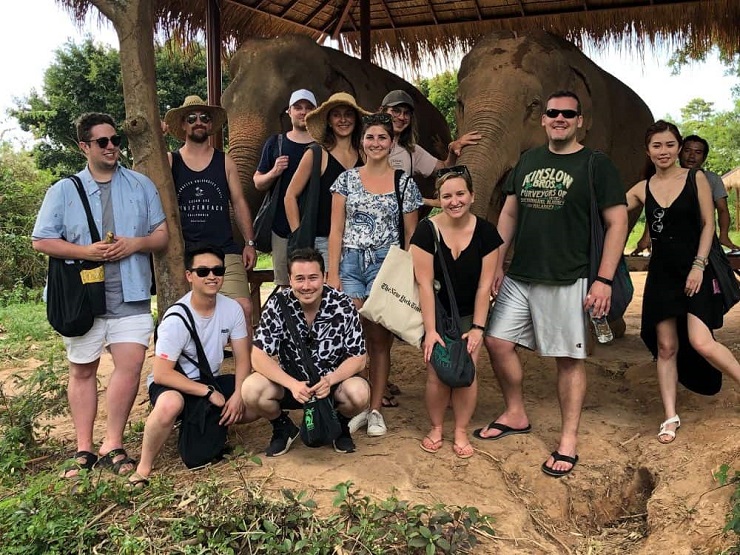
They put the entire marketing automation and funnel system in place before we launch. At the end of the day, it appears flawless, but this takes months of work to fine tune. And as you will see later, it’s been one of our keys to success.
On the other side, you’ve got the video production and content team, which includes:
- Zack, head of our course production
- Jess, our video producer
- Jenna, our blog managing editor
- Tate, our copy editor
- Giuliano, our graphic designer
- And many others (including me)
Thanks to our entire team’s work, we are able to open two or three new courses every quarter, consistently and profitably.
If you don’t have such a team, don’t worry. It took us a while to get to this point. What truly matters, as you’ve seen before, is that you create something your audience wants and needs.
If you lack an audience, start building one. If you have an audience, dig deep into their needs and problems. The rest will follow.
Step #4: Continue the Promotion
After you’ve launched your course, you still need to continue promoting the course.
In our case, whenever we create a blog post around a topic related to a course, we add a CTA to a waitlist or masterclass.
Then, our email marketing automation keeps the reader engaged around the topic, until we open the course again—usually once every three to four months.
The hard work is done before the creation and launch of the course. The work to be done later on is simply an extension or repetition of what was done before.
Building hype, engaging the email list, and giving tons of value away or free continues to be the foundation of our course marketing.
How to Sell Online Courses: 3 Top Tactics We’ve Honed While Selling 12 Hit Courses
For the past three years, we’ve implemented a lot of different marketing tactics with the hopes of increasing our course sales. During this time, we’ve seen what works and what doesn’t.
From the many tactics we’ve implemented, three stand out from the rest. Let’s take a deep look at each one.
Tactic 1: Lead With Value and Leverage Persuasion
We marketers love to complicate everything. We like to explain that the way we convince people to make a purchase is thanks to our capacity to get inside our customer’s mind; every sale happens because of us.
Actually, this couldn’t be further from the truth. If you remember every purchase you’ve ever made—from buying a pair of shoes to a gallon of milk to a car—you made it because you thought it was a good idea.
You wanted to look cool, so you bought a pair of fashionable sneakers; you were hungry, so you bought milk; and so on and so forth with any other purchase.
The only way we’re able to sell premium courses on a systematic and consistent basis is because our courses are more valuable than the price we charge for them. Otherwise, people would just stop paying for them!
Our courses teach people how to become entrepreneurs. They help them to break free from their jobs and gain control over their financial and professional lives.
But how do you really convey the value of something like a premium course? Our courses range from $200 to $2,000, how can we know that such price is “the best value” for our customers?
That’s where leveraging the psychology of persuasion comes to rescue.
The art of persuasion can be understood as the set of psychological levers a marketer can use to explain the value of an offer without having to resort to logical (and ineffective) explanations.
These levers, as I call them, aren’t dark magic or unethical tools that marketers use to trick people. They are just biases that affect the way people think and act.
The most famous persuasive techniques that marketers use have been explained by Robert Cialdini in his classic Influence: The Psychology of Persuasion. These techniques are:
- Reciprocity
- Consistency and commitment
- Authority
- Social proof
- Liking
- Scarcity
We use almost all of these techniques in our own marketing, and they explain a big part of our success so far.
Take the case of authority. The fact that we partner with top experts—think of Gretta Van Riel, who has built four multimillion-dollar ecommerce stores—helps us position our courses as truly authoritative.
Showing how our courses have helped our students start their businesses—social proof, that is—has also played a big part in our success.
As Cialdini explains, “the principle of social proof states that one means we use to determine what is correct is to find out what other people think is correct.”
Writers have an old saying: “Show, don’t tell.” As marketers, we also believe that showing the way our courses work is more powerful than writing a lot of copy trying to convince someone of its power.
Finally, we know that by limiting the number of students we enroll in each course, we can serve them better. The lower the teacher-to-student ratio, the more effective the teaching becomes.
That limited availability makes our courses more valuable, tying into the scarcity principle of influence, which Cialdini defines as the process where “opportunities seem more valuable to us when their availability is limited.“
Tactic 2: Use Funnels
Funnels are all the rage right now. Barely used just a few short years ago, now every marketer is talking about funnels, especially those using a landing page-like website that gets people to act on an offer.
Popularized by Russell Brunson, CEO and founder of Clickfunnels, they’ve become popular because they simplify marketing campaigns.
When I asked both Nathan and Jesse (our tech expert) about our most effective course-selling marketing techniques, both agreed on funnels as a key tool.
Funnels can seem complex, and they can be if your offer is equally complex, but in the simplest terms, they are an effective tool to systematize a marketing campaign.
A funnel, in the simplest terms, has three parts:
- The traffic-generation section, where you work to attract traffic to the landing page
- The conversion section, where you work to sign those visitors up for your free offer (which can be a downloadable asset like an ebook, a webinar, or some other type of high-value content)
- The nurture section, where you contact the people who signed up on your landing page to get them to buy your main, paid offer
Across these three sections, you’ve got what we can call the “cross-marketing” section, where you retarget people through the use of paid ads to some other section of your funnel.
What’s more, you can measure every step along the way, and watch how you’re able to improve your conversions through the funnel.
Previously, I mentioned that one of the keys to our course launches is the “pre-launch” phase. In this phase, we let people know about our a future course, creating desire around it. In order to build that hype, we first need to get people interested.
While a part of that audience comes from our existing email list, we also attract new subscribers through our other content. Since Foundr has a lot of published articles about many different topics, our funnel strategy is simple:
- We identify a list of previously published articles that relate to the topic of the new course.
- We build a landing page (the front-end of the funnel) where we talk about the new upcoming course, feature a trailer, and invite people to sign up for a waitlist.
- We include a link in the content from step 1 that invites people to visit the waitlist landing page. You will notice the calls to action for our Infinite Scale (latest product) waitlist in this article as well.
- Those who sign up for the waitlist then get a series of automated emails, where we continue building the excitement and interest around the subject of the course.
- Once we launch the course, people are sent to its sales page.
If we’ve done our marketing right, by the time our audience reaches our sales page, they’re convinced that the course is useful. The core objective of all the communications within the funnel is to speak to our audience, outlining the pain points they have and how our course can solve them.
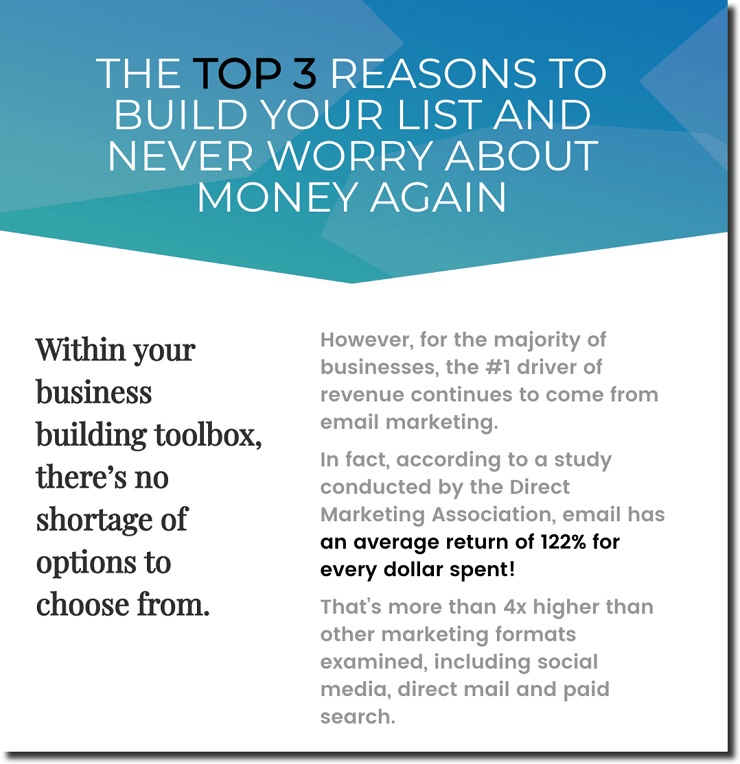
A big part of this funnel—the “back-end” of it, if you will—is the email automation, which I’ll explain in the next section.
Besides the email automation, we also use Facebook ads to retarget people who’ve visited the landing page but didn’t sign up, or those who visited the sales page but didn’t buy one of our courses.
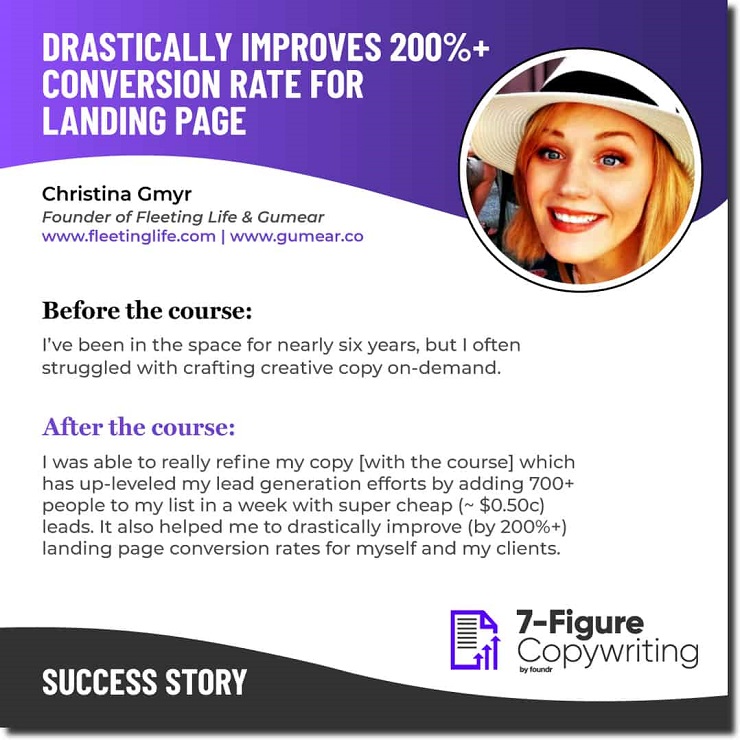
Another important feature in funnels is using “upsells” and “downsells.”
An upsell is when you ask for another sale on top of one you’ve made. That could mean that after someone buys a course from us, we’d sell them another course. A downsell, on the other hand, is when you pitch a different sale after you’ve been rejected.
In either case, the goal is to increase the average order value from a customer. Foundr just started using upsells in January 2019, and so far, the results have been promising.
The first type of upsell comes in the form of “order bumps”—that is, small additions to the order cart. They represent a small yet valuable increase in the average order value.
In our case, these “order bumps” come in the form of accreditations—since online education can be highly valuable but lacks any official accreditation, the fact we give them out helps our students show their knowledge around the topics of our courses.
The second type of upsell is adding an additional course sale on top of another. We haven’t used this approach much, but we have offered “Landing Page Formula” and “List Building Mastery” courses together.
Because both courses are highly related—you need a landing page to build a list and you want to build a list if you use landing pages—after someone buys either of them, they can choose to upgrade to join the other at a steep discount.
Tactic 3: Use Email Marketing Automation
Funnels are an incredible tool to attract people to purchase our courses, but the one tactic that moves our email subscribers to the point of signing up is our email marketing automation systems.
All of our marketing starts by identifying the people who’re interested in any given course. We don’t blast our entire list hoping to make a sale; we segment it through the funnel system shown before.
The marketing for our courses starts when someone signs up to a waitlist, which we discussed earlier. From there, we segment them from our regular list and we communicate with them in order to talk further about the problems they face and how we can help solve them.
We always give lots of free advice upfront—remember that our philosophy is to give 99% of our content for free. That doesn’t include just the blog posts we often publish, but the emails we send before the launch of the course.
Before we open the doors to any course, we define five key lessons we can distill from it, and we send them through an automated email sequence over five days.
We send our emails at 8 a.m. in the American Eastern Time zone, because most of our audience is US-based (we still love you, Aussie founders).
Regardless of the messages we send, the biggest thing that needs to happen to succeed in our launches is to build hype. We’ve found that developing a communications strategy where we share the new course that’s coming is the key to success. The pre-hype as as important as the launch itself.
If we send enough value for free before the launch of a course, we know that it’s going to be a success.
If you want to learn more about how to create a successful online course, check out the following video:
Start Selling Your Online Course
By now, you may think that our course-selling process is pretty complex. But this can all be summed up pretty simply:
- Listen to your audience and find out what types of products they need.
- Validate your course idea with pre-sales. Find out what it is your audience wants until you develop a no-brainer offer they can’t refuse.
- Create a product your audience will be willing to invest in. Build a stellar product that provides more value than its price tag.
- Work with a small batch of beta testers. Find out how they did, discover their roadblocks, and then adjust and iterate. Get another round of beta students and repeat the process.
- Start promoting the course by creating hype to your email list.
- Use sales funnels and email automation to segment your list and engage with the interested audience.
- Launch the course, connect with your audience, and repeat the process.
- Keep refining the course, listen to your students and make improvements as needed. Capture the results students are getting and share them.
Are you planning on launching a digital product soon? Hung up on any part of the creation or promotion process? Let me know in the comments below and we’ll help however we can!
